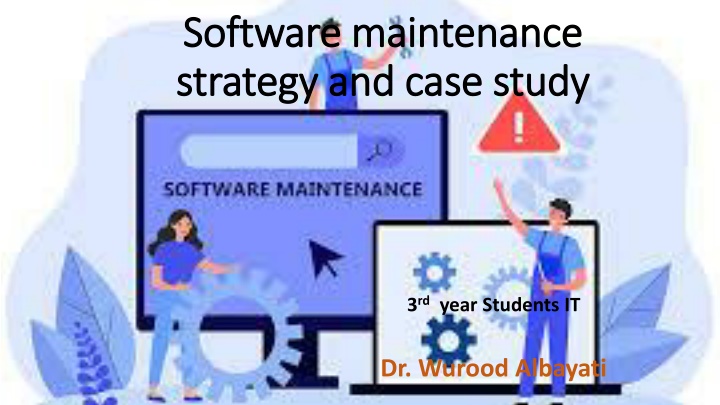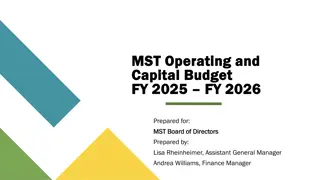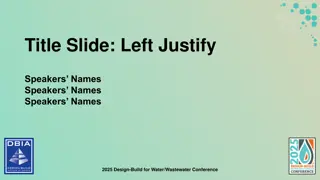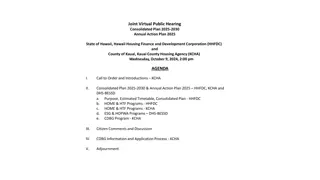
Effective Software Maintenance Strategies and Case Studies
Explore software maintenance strategies and case studies in the IT field, focusing on models like the quick-fix model, iterative enhancement, and the application of these models in real-world scenarios such as ABC Bank's core banking system. Understand the importance of structured maintenance approaches for addressing performance issues, security vulnerabilities, and regulatory risks.
Download Presentation

Please find below an Image/Link to download the presentation.
The content on the website is provided AS IS for your information and personal use only. It may not be sold, licensed, or shared on other websites without obtaining consent from the author. If you encounter any issues during the download, it is possible that the publisher has removed the file from their server.
You are allowed to download the files provided on this website for personal or commercial use, subject to the condition that they are used lawfully. All files are the property of their respective owners.
The content on the website is provided AS IS for your information and personal use only. It may not be sold, licensed, or shared on other websites without obtaining consent from the author.
E N D
Presentation Transcript
Software maintenance Software maintenance strategy and case study strategy and case study 3rdyear Students IT Dr. Wurood Albayati
Maintenance process models review and Maintenance process models review and challenges challenges Under the quick-fix model, Ripple effects, for example, will go unnoticed until they cause problems. When using quick fix model the structure of software will degrade rapidly. Quick fix model is not an optimal solution but it is a fire fighter approach , how could you adaptively enhance this model? is to incorporate the techniques of quick-fix into another, more sophisticated model. In this way any change hurried through because of outside pressures will generate a recognized need for preventive maintenance which will repair any damage done. Distinction must be made between short-term and long-term upgrades. Example: If a user finds a bug in a commercial word processor, it would be unrealistic to expect a whole new upgrade immediately. Often, a company will release a quick fix as a temporary measure. The real solution will be implemented, along with other corrections and enhancements, as a major upgrade at a later date.
iterative enhancement assumed complete documentation are available. Iterative enhancement control complexity & try to maintain good design . iterative enhancement lends itself to the integration of other models within it and can thus incorporate a quick fix in its own more structured environment. A quick fix may be carried out, problem areas identified, and the next iteration would specifically address them. Boehms model works in a loop too proposal request approved needed) approved changes develop and release new version or system develop and release etc. evaluate - propose a change (if
Iterative enhancement model The motivation for this was the environment where requirements were not fully understood and a full system could not be built. The problems with the iterative enhancement model is the assumptions made about the existence of full documentation and the ability of the maintenance team to analyse the existing product in full. The use of structured maintenance models will lead to keep documentation up to date and complete.
Case Study Case Study A leading bank, ABC Bank, operates a core banking system that handles online transactions, loan processing, and customer management. Over time, the system started experiencing performance issues, security vulnerabilities, and regulatory non-compliance risks. To systematically address these issues, the bank adopted Boehm s Software Maintenance Model, which provides a structured, cost-effective approach to software maintenance. Boehm s Maintenance Model for ABC bank Boehm s Maintenance Model for ABC bank 1. Understanding the Problem (Error Detection & Analysis) to approved the change The bank collected reports from customers and internal staff about slow transaction processing and occasional login failures. Security analysts detected vulnerabilities that could lead to potential cyber threats. Compliance officers identified new financial regulations requiring updates to data protection measures.
Boehms Maintenance Model for ABC Bank Boehm s Maintenance Model for ABC Bank 2. Change implementation( Maintenance Decision Analysis) : The IT department evaluated whether to: Fix the identified issues immediately (Corrective Maintenance). Upgrade the system for long-term efficiency (Perfective Maintenance). Implement compliance-related updates (Adaptive Maintenance). A cost-benefit analysis was conducted to prioritize tasks. 3. Implementation of Modifications Corrective Maintenance: Fixed login failures and transaction processing bugs. Adaptive Maintenance: Updated the system to comply with new financial regulations. Perfective Maintenance: Improved system performance by optimizing database queries and upgrading hardware infrastructure. 4. Evaluation (Regression Testing) & Validation : Before deployment, the changes were tested to ensure they did not introduce new issues. Functional Testing: Verified that transaction and login errors were resolved. Security Testing: Conducted penetration tests to confirm security fixes. Compliance Testing: Ensured the system met new financial regulations. 5. Deployment & Monitoring : Updates were done in a phased manner to avoid system downtime. Post-deployment monitoring was conducted to track performance and security. The system was continuously monitored, and user feedback was collected for future improvements.
Case Study: Software Maintenance Process Model for an E Case Study: Software Maintenance Process Model for an E- -Commerce Platform Commerce Platform XYZ Mart, an online retail company, operates an e-commerce platform that serves thousands of customers daily. The platform includes a website and a mobile app for online shopping, payment processing, and order tracking. Over time, the company identified several issues, including performance bottlenecks, security vulnerabilities, and customer complaints about the user experience. Problem Statement The company needed a structured approach to software maintenance to address the following: Fix critical bugs affecting checkout and payment processing. Adapt the system to new government regulations on data privacy. Improve website speed and user experience based on customer feedback. Prevent future failures by optimizing backend architecture.
Chosen Software Maintenance Process Model Chosen Software Maintenance Process Model IEEE Maintenance Process Model XYZ Mart decided to use the IEEE Software Maintenance Process Model due to its structured and systematic approach to handling maintenance activities. The model includes six key steps: 1. Problem Identification & Analysis : The company collected user complaints, error logs, and performance reports. Major issues identified: Checkout errors causing failed transactions. Slow-loading product pages. Non-compliance with new data protection regulations. A team of developers and analysts reviewed logs and reproduced the issues in a testing environment. 2. Modification Request :A formal request was created for each issue and assigned to the particular teams: Bug Fix Team: Address checkout and payment failures. Performance Optimization Team: Improve website and app speed. Regulatory Compliance Team: Ensure compliance with data protection laws. 3. Analysis & Design : The engineering team analyzed the root causes and designed solutions: Bug Fixes: Refactored payment gateway integration. Performance Improvements: Database indexing and CDN optimization. Regulatory Compliance: Implemented enhanced encryption and data anonymization.
4. Implementation : Developers coded fixes, optimized database queries, and improved security measures. New features and fixes were first deployed in a staging environment for testing. 5. System Testing & Acceptance Unit Testing: Each change was tested individually. Integration Testing: Ensured new modifications worked with existing systems. User Acceptance Testing (UAT): Selected customers tested the changes and provided feedback. 6. Deployment & Monitoring : The updates were deployed in a phased manner to minimize downtime. Post-deployment monitoring ensured that the fixes resolved the issues without introducing new ones. A maintenance team was assigned for continuous monitoring and future updates.
Software maintenance strategies All software companies should have a specific strategy in place to tackle software maintenance in an effective and complete manner. Documentationis one important strategy in software development. If software documentation isn t up to date, upgrading can be seemingly impossible. The documentation should include info about how the code works, solutions to potential problems, etc. The documentation includes: project plan SRS-Software Requirement Specification Software design description document Source code list Test plan \ procedures \test cases User manual QA is also an important part of a software maintenance plan. While QA is important before an initial software launch, it can also be integrated much earlier in the process (as early as the planning stage) to make sure that the software is developed correctly and to give insight into making changes when necessary.
Software Maintenance Software Maintenance Configuration management Configuration management It is the process of managing changes, updates, and modifications in a software system by ensuring that updates, fixes, and improvements are well-managed, documented, and implemented without disrupting system stability. To maintain the quality of software during maintenance :consistency, integrity, and reliability should be maintained. Different tools could be used to achieve the configuration such as version control ( e.g. Gits) Configuration management involves: identification of components ( that needed to be changed) control the way by which the change are made Auditing the change Updated documents
Configuration management for software maintenance should cover Configuration management for software maintenance should cover Version Version Control Control Change hange Management Management Baseline Baseline Management Management Deployment Deployment Configuration Configuration Example ( version control): A development team uses Git to track changes, ensuring that each maintenance update is properly documented and can be rolled back if needed. To achieve version control Example (change management): Before applying security patches, a change request system assesses the impact and tests updates to prevent failures. To achieve management of the change. Example( Baseline Management): the system to be maintained should ensures that data is backed up before software maintenance. To enforce baseline management for stability Example( deployment configuration): when releasing new software updates. where maintenance updates are first tested before full deployment. To achieve deployment management
importance importance of Software Maintenance Configuration of Software Maintenance Configuration Ensures system stability by controlling updates. Prevents conflicts between multiple maintenance activities. Reduces downtime by allowing smooth rollbacks. Improves security by tracking changes and patching vulnerabilities. Facilitates team collaboration by maintaining clear documentation.


















